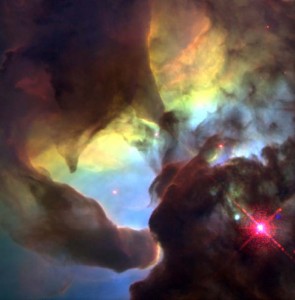by Ann » Mon Nov 07, 2011 4:34 pm
This is indeed a supremely beautiful nebula, and the picture is fantastically detailed.

Central "twisters" in the Lagoon Nebula.
Credit: A. Caulet (ST-ECF, ESA), NASA.
In the "heart" of the Sharpless 2-106 nebula, right next to the extremely reddened massive central star, we can see a dusty "twister". Its shape reminds me of the center of the Lagoon Nebula, where a massive star is also being born.
I'm wondering about the bright blue star which is seen in today's APOD. What star is that? As I checked out Sharpless 2-106 with my software, the only star that seemed
to be,
possibly, sufficiently nearby, was TYC 2697 286. It is a tenth magnitude star, whose color index suggests a G-type star (or a reddened star of a hotter spectral class). Could this be the bright star that we see in today's APOD?
Ann
This is indeed a supremely beautiful nebula, and the picture is fantastically detailed.
[float=left][img]http://perfumeposse.com/wp-content/uploads/2009/09/float-295x300.jpg[/img][c][size=85]Central "twisters" in the Lagoon Nebula.
Credit: A. Caulet (ST-ECF, ESA), NASA.[/size][/c][/float]In the "heart" of the Sharpless 2-106 nebula, right next to the extremely reddened massive central star, we can see a dusty "twister". Its shape reminds me of the center of the Lagoon Nebula, where a massive star is also being born.
I'm wondering about the bright blue star which is seen in today's APOD. What star is that? As I checked out Sharpless 2-106 with my software, the only star that seemed
to be, [i]possibly[/i], sufficiently nearby, was TYC 2697 286. It is a tenth magnitude star, whose color index suggests a G-type star (or a reddened star of a hotter spectral class). Could this be the bright star that we see in today's APOD?
Ann